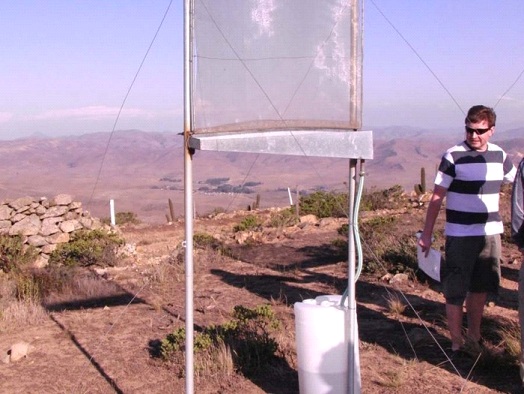Fresh, safe water is vital to your survival – regardless of what you are facing.
A new concept currently under testing might change all that!
Fog-harvesting systems generally consist of a vertical mesh, sort of like an oversized tennis net. Key to efficient harvesting of the tiny airborne droplets of fog are three basic parameters, the researchers found: the size of the filaments in those nets, the size of the holes between those filaments, and the coating applied to the filaments.
While some of the organisms that harvest fog do so using solid surfaces — such as the carapace of the Namib beetle, native to the Namib desert of southern Africa — permeable mesh structures are much more effective because the wind-blown fog droplets tend to be deflected around solid surfaces, Park says. With the right chemical coating, fog droplets that form on the screen then slide down to be collected at the bottom and are funneled into buckets or tanks.
Detailed calculations and laboratory tests indicate that the best performance comes from a mesh made of stainless-steel filaments about three or four times the thickness of a human hair, and with a spacing of about twice that between fibers. In addition, the mesh is dip-coated, using a solution that decreases a characteristic called contact-angle hysteresis. This allows small droplets to more easily slide down into the collecting gutter.
While the systems currently deployed in the coastal mountains at the edge of the Atacama Desert tend to yield a few liters of drinking water per day for each square meter of mesh, the theoretical calculations show that newly designed systems operating in the strong winds and dense fogs that form along the Chilean coast at certain times of the year could yield up to 12 liters per day or more, the researchers say.
Large mesh structures, of hundreds of square meters each, could be set up relatively inexpensively; once in place, they cost virtually nothing to operate. They consume no energy, needing only an occasional brushing to remove particles of grit and bugs. “
Chilean investigators have estimated that if just 4 percent of the water contained in the fog could be captured, that would be sufficient to meet all of the water needs of that nation’s four northernmost regions, encompassing the entire Atacama Desert area. And with the MIT-designed system, Park points out, 10 percent of the fog moisture in the air passing through the new fog collector system can potentially be captured.
The struggle to find and store water, in the best of times is a challenge for much of the world; mesh fog-harvesting is one possible way to greatly reduce that challenge!
Sooner or later, a smaller version will come on the market that is tailored for survivalists, campers, etc.
To read more about this intriguing concept, please visit True Activist!
Featured Image via True Activist / MIT
